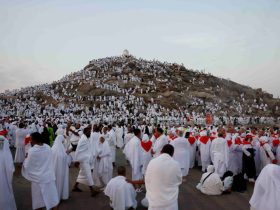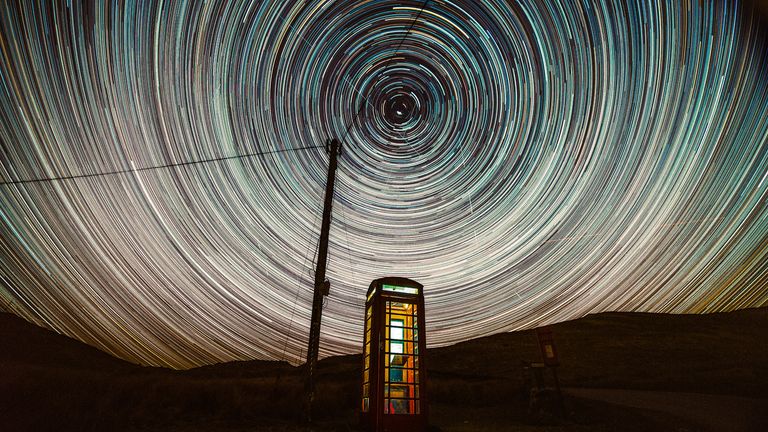A supermoon will rise over the horizon on Monday night.
Supermoons occur when a full moon rises during its closest point in its orbit to the Earth. They look huge, bright… and very photogenic.
So where do you start if you want to begin snapping the night sky?
Welsh astrophotographer Dafydd Wynn Morgans has been photographing the universe for years, making the most of the dark skies above the Cambrian mountains.
It’s an area known for its astrotourism, with stargazers heading to the area’s “astrotrail” – nine Dark Sky Discovery Sites where it’s possible to see deep into space because of the lack of light pollution.
“I feel a little bit honoured and privileged to be able to go out at night,” says Dayfdd, talking to Sky News from a picturesque campsite outside Llanddewi Brefi village.
He was out photographing all night, taking advantage of the clear sky but he’s still upbeat: “It is quite emotional sometimes when I sit back and think how lucky I am.”
So here are some top tips on how to start taking photographs of the night sky.
Get to know your local area’s darkest spots
“Seek out somewhere where you live which has minimal light pollution,” says Dafydd.
“Somebody once said, ‘Only in the darkness can you see the stars’ and it’s true. If there’s bright lights everywhere, you won’t see the stars, the planets, the galaxies.”
Plan ahead as to where you’re going to spend the night – make sure it is safe and you’re allowed to be there, and let someone know where you’re going.
He also recommends taking a flask of coffee to keep yourself awake.
“You need to plan,” Dafydd says. “It’s not like going down to the shop to buy a pint of milk.”
If you’re somewhere remote where people might not expect to see a person wandering around, it’s a good idea to let residents know you’ll be there.
“I go knocking on any doors during the day to tell people that in the middle of the night, someone might appear on a hill opposite their property.
“I’ve learned – my first ever mistake was going somewhere with a group of us with red head torches and the police turning up.”
A local resident had spotted the red lights, used to help preserve the eyes’ night adaptation, and thought there was a rave happening on top of the hill.
Give stargazing a go first
“Get to understand what you can see in the night sky. What are you looking at?” he says.
This will help you understand where to look in the sky, the speed at which things move and the kind of celestial events you’re most interested in.
There are lots of stargazing apps you can use to understand what you’re looking at – although make sure your screen brightness is down so you can still see in the dark!
If you’re stargazing, Dafydd says to bring some nice, warm clothing and a blanket to lie on instead of craning your head back to look.
“If you’re lying down, you’ve got a cinematic seat under the cosmos.”
Try using your phone to snap some pictures
Although a fancy camera will give you more options, Dafydd says you can start with your phone and still get great results without having to spend lots of money.
“A lot of the smartphones these days have camera technology in them that can allow you to take wonderful photographs of stars, the Milky Way, the aurora borealis and the moon,” he says.
Put your camera or phone on a tripod to make sure it stays still. If you move or shake the camera during this time, you’ll get a blurry shot.
Play around with increasing your exposure and ISO – both are usually available in smartphones’ pro mode. Doing that will let more light in, which will make it possible to see what is in the sky.
“If you really get into it, you can decide then to invest some money on a good camera, a good lens, a good tripod, a remote control and a head torch as well,” says Dafydd.
“And then all of a sudden, you’ve opened yourself into a new galaxy of experiences.”
Just remember to check you’ve got everything before you head off into the night, he warns.
“Once, I travelled three hours and I had forgotten to put the memory cards in the camera…”









